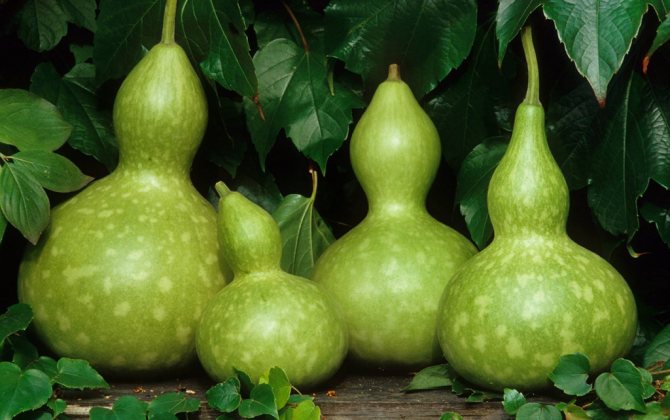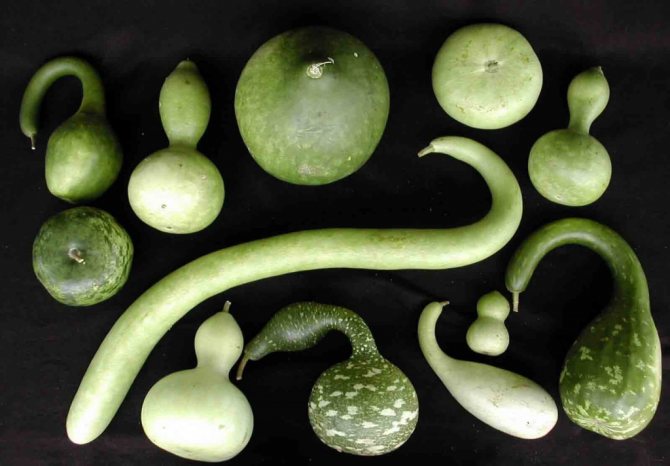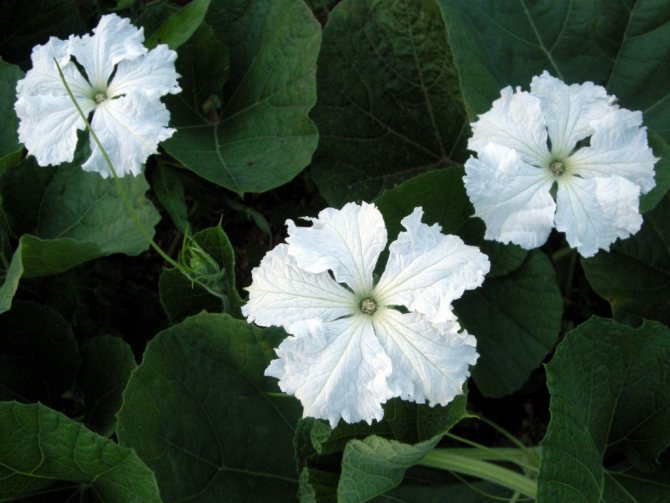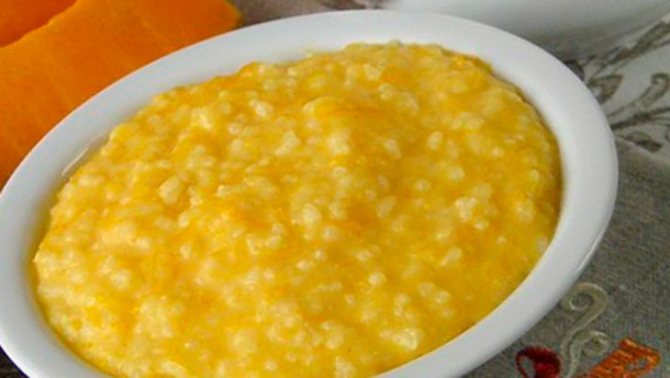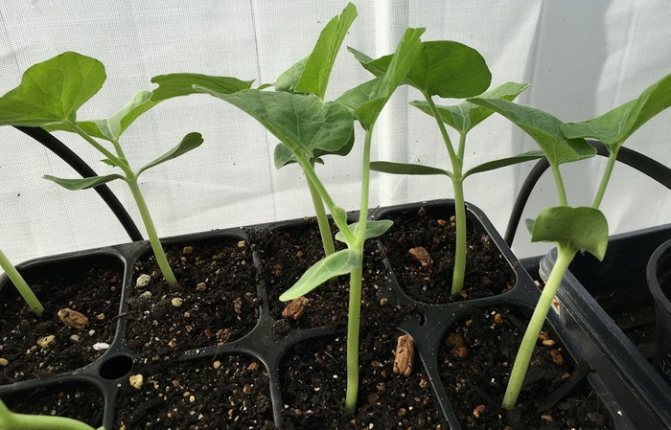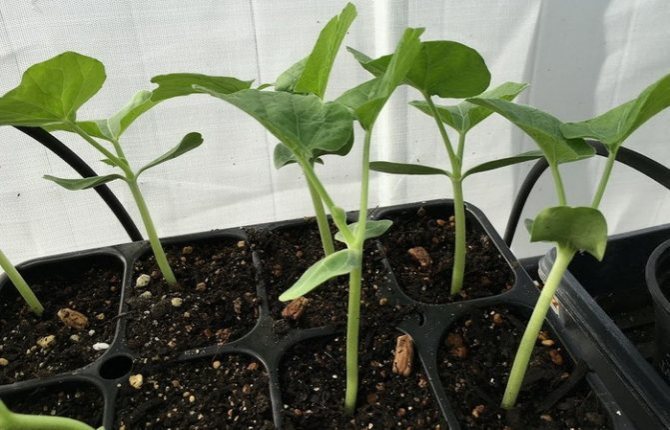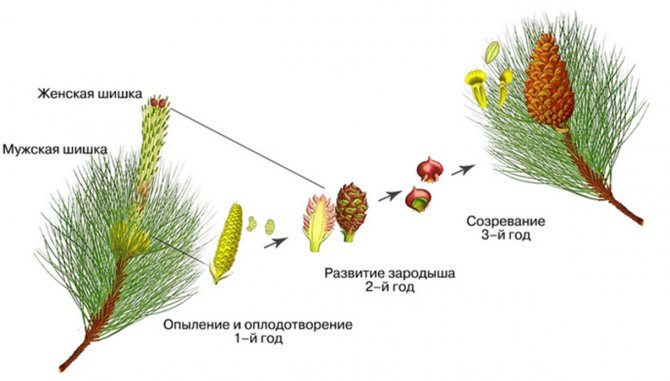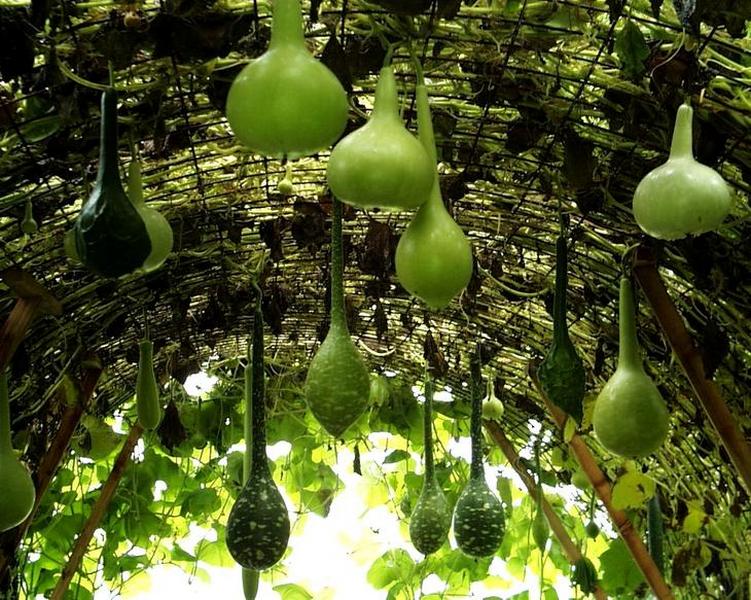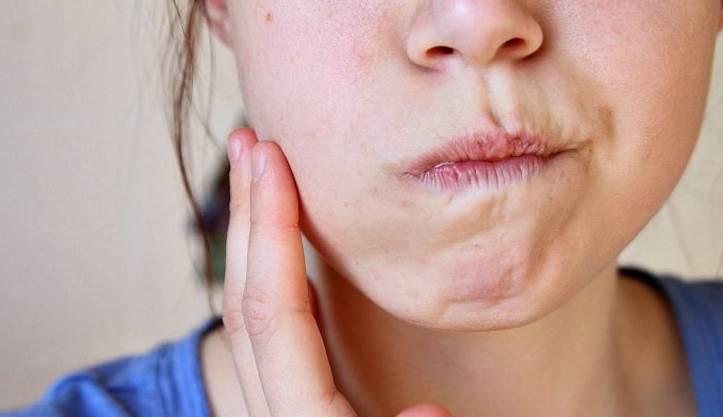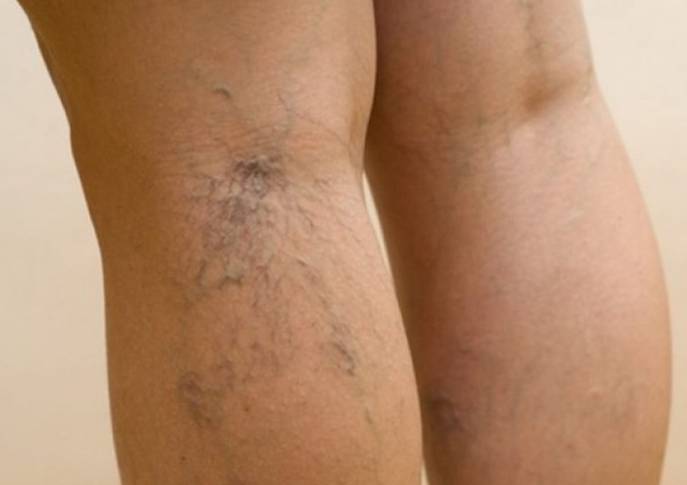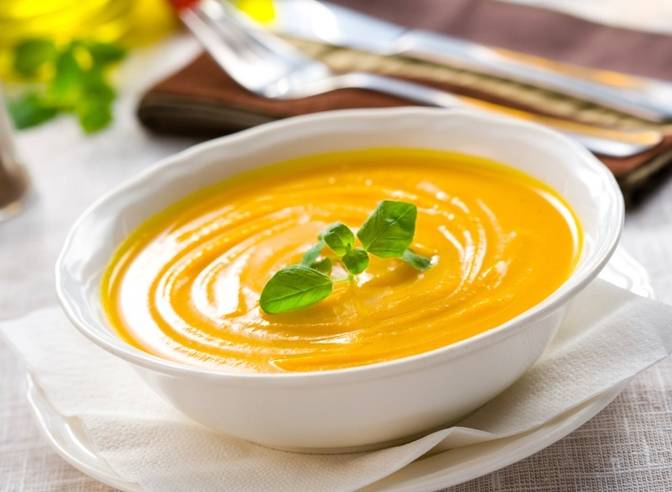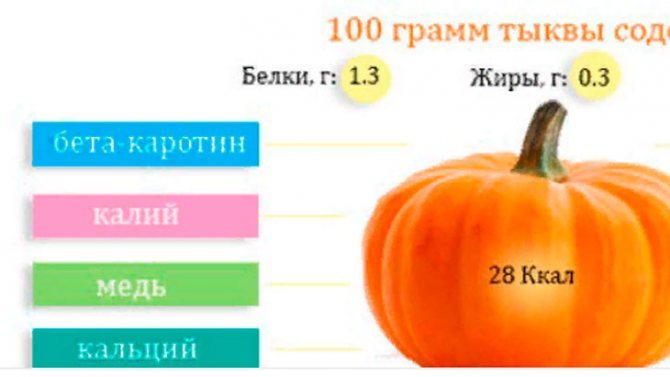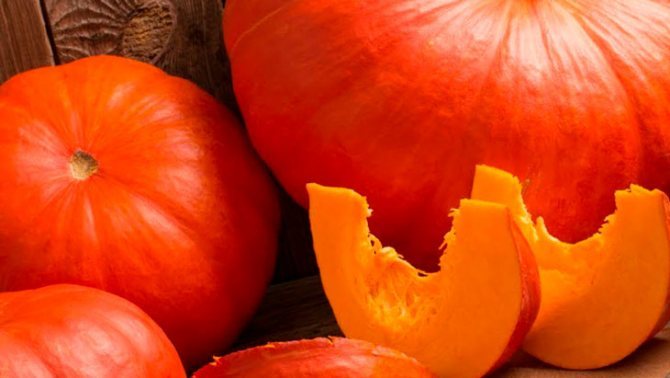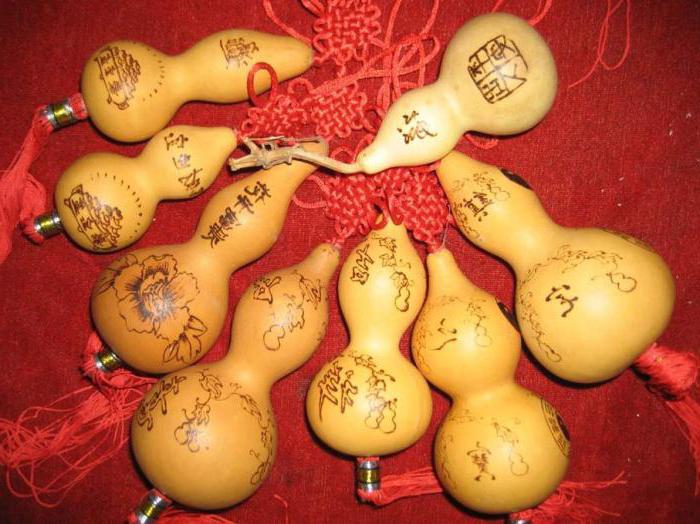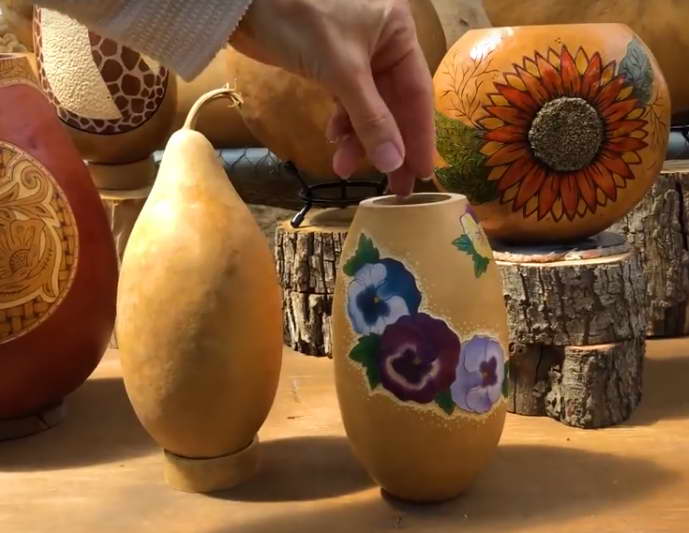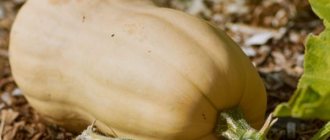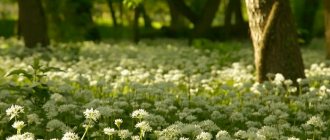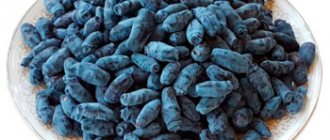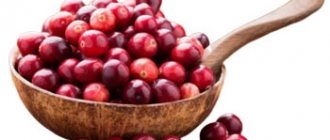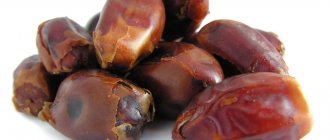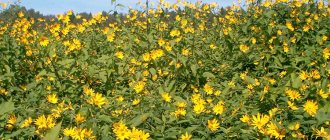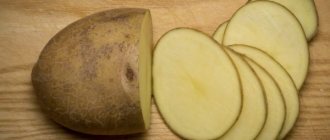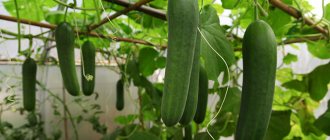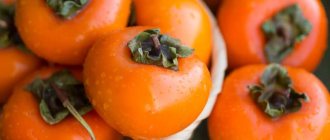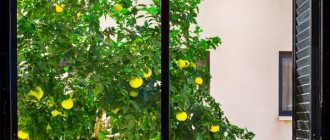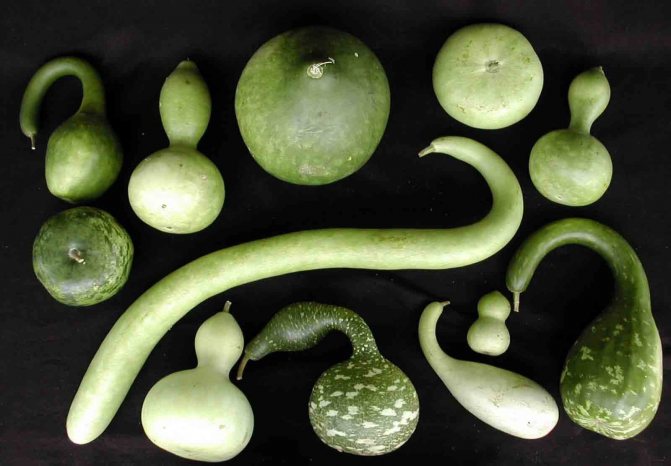
Gourd, bottle gourd, common lagenaria, Indian cucumber, Vietnamese zucchini, calabas ... This plant has many names and everyone is free to choose what they like best. This creeping vine came to us from Africa. This plant is cultivated in subtropical and tropical climates: China, South America and Africa. In our latitudes, the cultivation of such a plant is possible only in greenhouses and hotbeds.
Description and varieties of lagenaria
Such a plant appeared a very long time ago and immediately attracted people because of its decorative properties. Belongs to the pumpkin family, where there are about seven more similar creeping genera. In ancient times, it was not used as food at all. Lagenaria was used to make durable dishes, toys, and various handicrafts. And now it is still used to make various souvenirs.
However, in addition to this, the fruits of bottle gourd also have healing qualities.
Lagenaria has a creeping liana-shaped stem, large white flowers with a rather unpleasant aroma. Flowers open closer to the night, and during the day they are always closed, which makes it difficult to pollinate them.
Fruits, depending on the variety, are round, oblong, pear-shaped and oval. They are quite light, and their strong skin does not let water through. The fruits themselves can reach up to two meters in length and up to thirty-two kilograms in weight. One plant produces about ten to fifteen fruits. The leaves of the plant are corrugated, pentagonal in shape.
There are many different varieties of this pumpkin. The most popular and outlandish are: lagenaria "swan", lagenaria serpentine, lagenaria bottle, "cobra", lagenaria polenovidnaya, botles, "goose in apples", lagenaria clavate, "geese-swans", "turban" and others.
Drying and processing
To use a gourd for decorative purposes, it needs to be cleaned and dried. First, it is dipped in water so that it is completely wet, and covered with a damp cloth. The duration of the soaking process depends on the thickness of the bark and is equal to 0.5-1 hours.
During the soaking process, the vegetable is regularly turned over to ensure that it gets evenly wet.
The readiness of the vegetable for processing is checked by removing the top bloom. To do this, use a simple household metal mesh for washing dishes. When cleaning the wax layer, they try not to apply special efforts so as not to harm the surface of the vegetable.
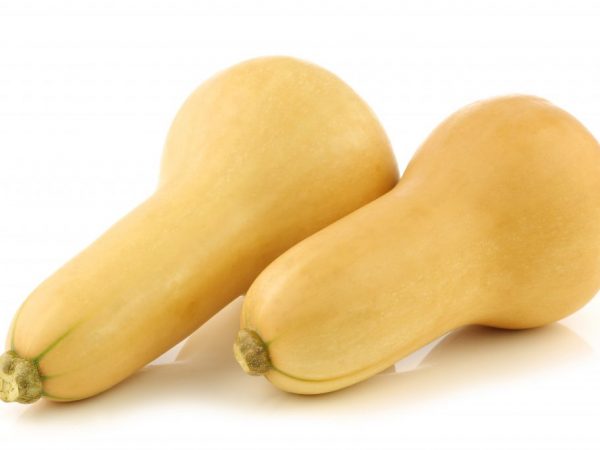

They make beautiful bottles from the fruits
Using bottle gourd
The long-fruited young lagenaria is often used for food, and the more mature fruits are used to make musical instruments, vessels, toys and various crafts. The Indians made smoking pipes from the peel of the plant.
The stems of the creeping plant are often used in weaving, and oil is made from its seeds.
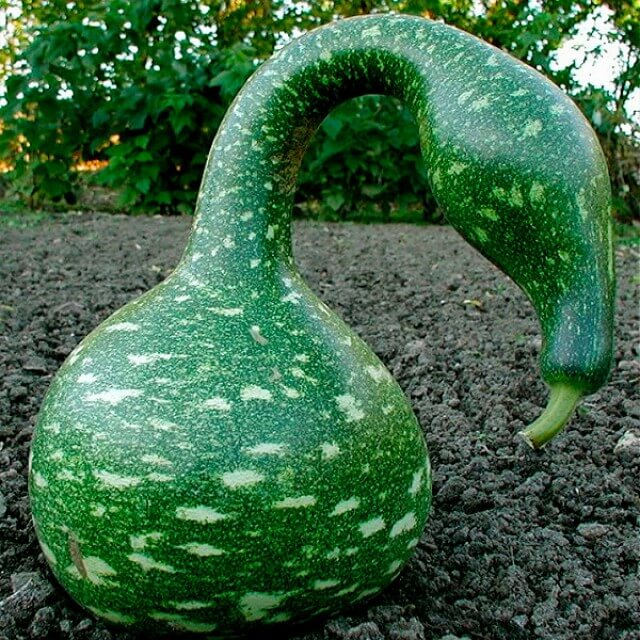

The taste of bottle gourd is soft, with a light spicy note and a piquant bitterness. Various dishes are prepared with it: desserts, soups, salads and side dishes. Lagenaria can be boiled and fried, stewed and baked, canned and marinated. Steamed and grilled lagenaria is good. Bottle gourd porridge and mashed potatoes are extremely popular, and making caviar and gourmet sauces is almost an art. You can often find stuffed lagenaria.Mushrooms, meat and other vegetables are used as a filling.
The chemical composition of Lagenaria is presented:
- dietary fiber;
- sugars;
- proteins;
- vitamins of group B, ascorbic acid, vitamins A and;
- sodium, calcium, iron, potassium and other useful minerals.
Due to this valuable composition, bottle gourd is widely used in folk medicine. Lagenaria is used for:
- cardiovascular diseases;
- liver disease;
- gastrointestinal pathologies;
- diseases of the bladder.
Such a pumpkin is very useful for diabetes and obesity. The systematic use of this vegetable in food contributes to the normalization of metabolic processes and the digestive system.
In folk medicine, the petioles and young fruits of the plant are used. Healing ointments, infusions and lotions are made from them. Lagenaria seeds are used as a powerful anthelmintic, and recent studies have shown that it contains substances that slow down the growth and development of malignant tumors.
A large amount of ascorbic acid helps to strengthen the immune system, increases the body's resistance to infections and viruses.
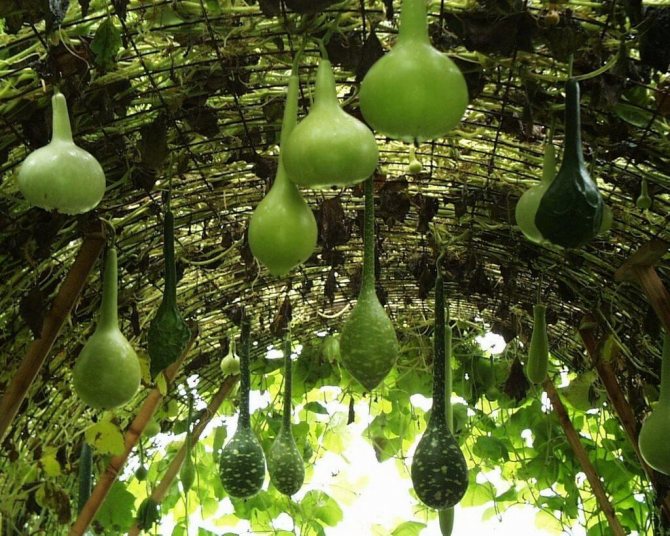

A contraindication to the use of such a creeping pumpkin is only an individual intolerance to the components that make up the plant.
In addition, lagenaria is often used for grafting cucumbers or watermelons. This grafting helps the grafted plant to become stronger, more cold-resistant and produce a richer crop.
Pumpkin - benefits and harms to the body in diabetes
The vegetable helps treat and prevent type 2 diabetes. Regular consumption of the pulp of a ripe fruit allows you to restore pancreatic cells, increase the production of insulin. Thus, the daily dose required for the full functioning of the body is reduced.
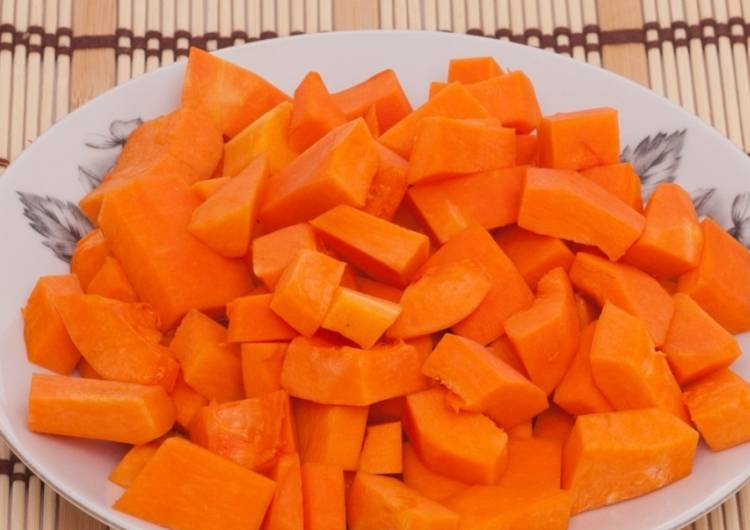

The plant product activates metabolic processes, as a result of which excess weight goes away faster, which is so important in this disease.
When the fetus is eaten, the glucose level remains within normal limits, the vascular walls are strengthened, which leads to a decrease in the risk of atherosclerosis, maintenance of salt metabolism, thereby disappearing puffiness.
Growing and caring for a plant
In our conditions, such a plant can be grown only with the help of seedlings and only in greenhouses or hotbeds. Calabash grows very quickly with proper care and favorable conditions.
Such a pumpkin will have to be pollinated by hand, since its flowers open only at night, and thus become inaccessible to daytime insects.
Lagenaria does not like drafts and windy spaces. This is a tropical plant, and therefore it needs a warm climate. Often it is planted near fences or walls of houses.
Usually, ready-made seedlings are bought for planting, but it is quite possible to grow them from seeds, which must be soaked for a couple of days in warm water before planting. They are planted to a depth of about three centimeters and covered with a film.
After about a month, the seedlings can be planted in open ground, observing the distance between the seedlings of about one meter.
As it grows, the vegetable is provided with reliable support.
Lagenaria does not often get sick, sometimes it is prone to powdery mildew, cucumber mosaic or anthracnose. The soil for planting the plant must be well-drained and rich in organic fertilizers.
Feeding with mineral and organic fertilizers is carried out every ten days. When the shoots reach four meters, they are usually pinched. When flowering, lagenaria needs to be pollinated. For one female flower, you need three male pollen.
The best materials of the month
- Why you can't go on a diet on your own
- 21 tips on how not to buy a stale product
- How to keep vegetables and fruits fresh: simple tricks
- How to beat your sugar cravings: 7 unexpected foods
- Scientists say youth can be prolonged
Harvest the pumpkin about three months after planting, but always before the onset of cold weather. Moreover, it is interesting that the fruits of the plant do not rot if you pinch off a piece and leave them to grow further on the liana.
Lagenaria - personal experience of growing and caring
This annual plant from the pumpkin family has long been known to man. In China, lagenaria was cultivated as early as two millennia BC. And her homeland is India and Central Asia. The fruits of lagenaria have different forms, therefore they call it differently everywhere - dish pumpkin, gourd, bottle pumpkin, Vietnamese cucumber, Indian cucumber.
The walls of the lagenaria fruit are strong enough. When dried, the inside of the fruit remains empty. It turns out to be an excellent jug for storing food and drinks that is not exposed to microorganisms. This plant is especially popular among the peoples of Africa. What do they just do there from the fruits of the lagenaria - basins, bowls, ladles, decorations, pipes for water supply, the famous tom-toms! In completely wild tribes, where they do not even know what clothes are, men still use one single object to protect their reproductive organs. And all these caps are made from the corresponding type of lagenaria.
Young ovaries of Lagenaria, which resemble cucumbers, are used for food: they have a thin skin, do not coarse for a long time. You can cook salads from them, bake pancakes, fry, pickle.
Young fruits of lagenaria have a unique characteristic. They can not be torn off, but cut off in parts. The cut site quickly turns cork, and the fruit continues to grow.
Lagenaria is distinguished by strong growth and branching of stems and whiskers. The root system is very powerful. The green leaves are soft velvety, beautiful large flowers begin to bloom in the afternoon and fully open by midnight. Both male and female flowers are formed on the same plant.
In central Russia, it is advisable to grow lagenaria through seedlings. I first soak the seeds in a growth stimulator for several hours, then put them in a warm place until they peck. I sow the hatched seeds at the end of April in individual pots with a diameter of 10-12 cm with a light and nutritious soil mixture. I grow seedlings at a temperature of 22-24X.
I plant seedlings in a permanent place at the end of May. when the soil is already warmed up enough. It is important to find a good location for the plants. I plant the lagenaria at the ends of the film shelters, tying a whip to the nearest / support or tree. Thus, the root system is warm, and almost all vegetative mass gets complete freedom and maximum illumination. And then huge "sausages" - fruits hanging from the tree look very interesting. Plants can be planted on the south side of buildings or along a mesh fence. The distance between them should be from 50 to 100 cm. I pre-fill the wells with soil mixed with humus, adding a glass of ash and 2 tbsp. tablespoons of organomineral fertilizer. Then I spill them with warm water. I plant the pots with the plant without deepening. After planting the holes, I mulch with humus.
Lagenaria loves abundant daily watering with warm water.
In the second half of the growing season, the roots of the plants themselves can easily extract water. Over the summer I spend 3-4 feeding, alternating organic and mineral (full complex fertilizer).
As I said above, female flowers open in the evening. In our conditions, insects stop their years at this time. Therefore, I use artificial pollination. To do this, I pluck a male flower with pollen, carefully tear off the petals from it and apply it to the female flower so that the pollen gets on the stigma of the pistil. You can carry out the same operation with a brush. Within a few days, the ovary of a female flower begins to rapidly increase in size.To avoid thickening, part of the lateral shoots and ovaries must be removed, leaving 3-5 fruits on the plant.
Tips for gardeners when growing lagenaria
- do not scarify the seeds (high-quality ones will sprout by themselves);
- do not plant lagenaria in the shade - it is very light-requiring;
- do not use dense soil with high acidity for planting;
- due to the high resistance of the root system to rot, lagenaria can be used to graft watermelon and melon onto it.
Instead of conclusions
Lagenaria is one of the exotic varieties of pumpkin, native to tropical latitudes. For its cultivation in our area requires greenhouse conditions and good care. Such a plant is used for food, and is also used for the manufacture of various crafts, musical instruments and dishes. In addition, bottle gourd is a valuable medicinal product that is widely used in the field of traditional medicine.
More fresh and relevant health information on our Telegram channel. Subscribe: https://t.me/
We will be grateful if you use the buttons:
Which pumpkin is healthier (raw, boiled, baked)
The raw vegetable is enriched with biologically active compounds, which has a beneficial effect on overall well-being. However, not everyone can eat the fruit raw. A properly prepared product will saturate and nourish, improve the condition of the body as a whole.
Steamed
A steamed vegetable retains many trace elements that help to effectively lose weight, and removes toxic substances. The fruits stewed in a water bath help relieve swelling, and also alleviate the symptoms of toxicosis during pregnancy.
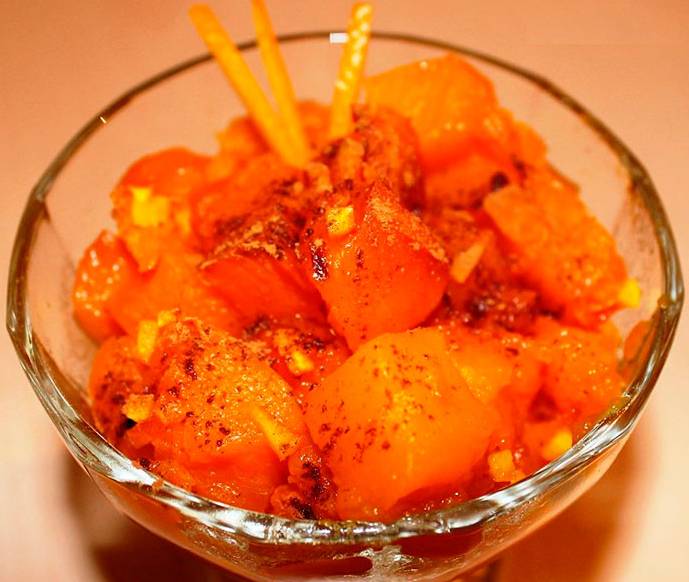

Boiled
Such a product is well absorbed in case of disturbances in the work of the stomach, helps to cure obesity, and also prevent the development of anemia. Boiled vegetables are introduced into the diet of children from the early months. They are also used in cosmetic masks.
Dried
By drying pumpkin, it is possible to preserve a huge amount of nutrients that are beneficial for the digestive tract. Dried fruits are stored for a long time without losing their valuable compounds. They are able to increase stamina and strengthen memory.
Baked
Oven baking is a gentle method that does not destroy vitamins and preserves maximum taste. A baked vegetable has a beneficial effect on blood vessels, strengthens the heart system, improves liver function, and starts the processes of cleansing the kidneys.
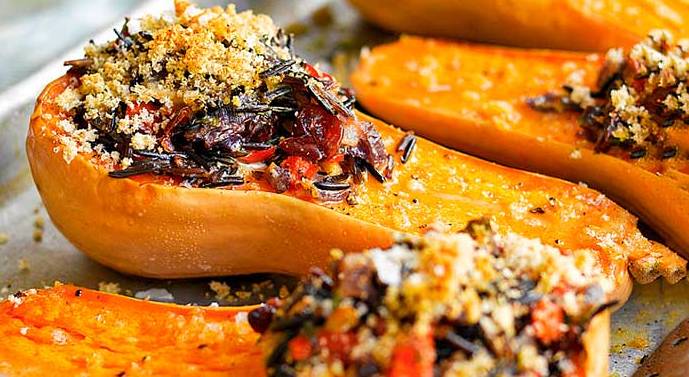

The benefits and harms of pumpkin juice for the body
Pumpkin juice regulates the digestive system, starts metabolism, improves peripheral circulation. Also, thanks to the drink, the risk of cholesterol plaque deposition on the walls of blood vessels is significantly reduced.
Half a glass of juice with 1 teaspoon of lemon will normalize sleep and strengthen the nervous system.
For the male part of the population, juice is indispensable in the treatment of sexual disorders.
Drinking should be limited to persons with low secretion of gastric juice, the presence of inflammation in the gastrointestinal tract, as well as those suffering from diarrhea.
Properties of pumpkin - feng shui gourds
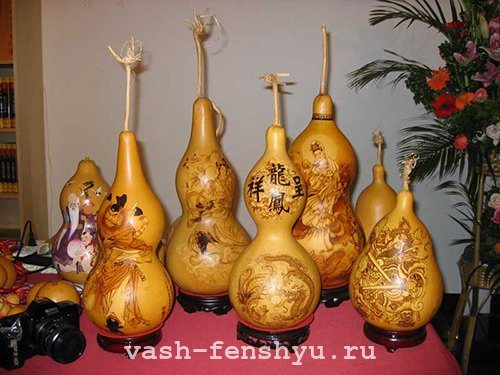

variety of pumpkins
Lagenaria vulgaris is designed to serve as a talisman for the house, maintain the health of its inhabitants, and contribute to their longevity. This is its main purpose.
The action of the talisman is so strong that if you place it at the head of a sick person's bed, it will contribute to recovery. Hu-lu absorbs all negative energy, endows the patient with vital energy and improves his mood. It brings relief first, and then complete healing.
The Chinese believe that the healing effect of the amulet will increase significantly if it is decorated with the image of the Dragon, which brings good changes and good luck. With the combination of medical treatment and a talisman, the patient's recovery will be much faster! And the effect of drugs will increase many times over. Do not neglect the help of ordinary lagenaria!
Another gourd-gourd feng shui eliminates the negative influence of a wandering star - "black deuce". The School of Flying Stars recommends placing the amulet in the area where the Star of Disease arrives. To do this, it must be made of the material that feeds the elements of the owner of the house. Every year the position of the Hu-lu pumpkin should be changed according to the movement of the "black two".
In addition, in the Zone of Love or the bedroom, this wonderful talisman of health has a beneficial effect on the relationship between spouses, enhances love feelings and promotes the return of former passion.
In the Family sector or in the children's room, it harmonizes the relationship between parents and children, restores the vital energy of all family members.
In the work area or on the desktop, gourd gourd relieves stress, streamlines thoughts, activates performance and protects against accidents.
How to choose a good pumpkin
Only a ripe and juicy plant will bring maximum benefits to the body. In order not to be mistaken in choosing a pumpkin, you need to act like this:
- Examine the tail of the vegetable. If it was cut, it means that such a vegetable is still unripe. In a mature pumpkin, the stalk falls off after ripening;
- A dense skin indicates that the fruit is ripe and good for food. If, with a slight pressure on the fruit, the peel remains intact, then such a vegetable can be safely taken.
- When buying, you should give preference to whole vegetables. Fruit that is cut into pieces can quickly lose its freshness.
- The optimal vegetable weight is 3-5 kg. Fruits that are too large may have watery or dry flesh.
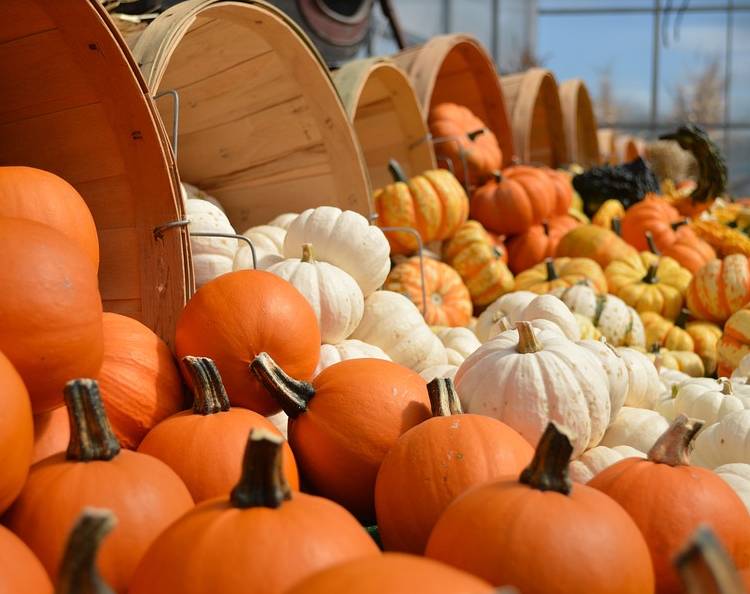

Pumpkin-based traditional medicine recipes
The fruits have an antibacterial, anti-inflammatory effect, help with various acute and chronic diseases.
With arthritis
To relieve inflammation, combine 500 ml of pumpkin oil with 2 tbsp. l. wormwood. Boil in a water bath for 1.5 hours. Insist 2 days. After 48 hours, filter. Rub into sore spots 2 times a day for 14 days.
For insomnia
In a glass container, mix 300 g of pumpkin pulp, 2 tbsp. l. honey, pour 2 liters of water. Insist for an hour. The mixture is taken in 100 ml 2 hours before bedtime. The course of therapy lasts 14 days.
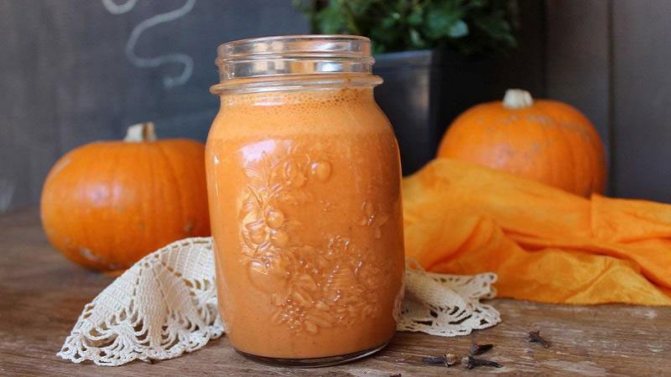

For the liver and gastrointestinal tract
200 ml of pumpkin seed oil is mixed with 2 tbsp. l. yarrow, 1.5 tbsp. l. St. John's wort. Leave in a dark place for a week. Take 1 tsp. 30 minutes before meals 2 weeks.
For problems with the oral cavity
A mixture of pumpkin and fir oils helps with bad breath and infectious diseases of the mucous membranes. Both ingredients take 1 tsp. 30 minutes before meals, wipe the oral cavity with a cotton swab.
For problems with the nervous system
Juice is squeezed out of 1 kg of pumpkin. With pathologies of the nervous system, take 100 ml 2 times a day 15 minutes before meals. The therapy lasts 2 months, the break between courses is 14 days.
The benefits and harms of pumpkin seeds
Pumpkin seeds contain useful acids, mineral and vitamin components. They are high in calories, so there is no need to abuse them.
You can enjoy both raw and dried seeds. Thus, it is possible to preserve the maximum number of useful properties. Do not fry or bake the seeds.
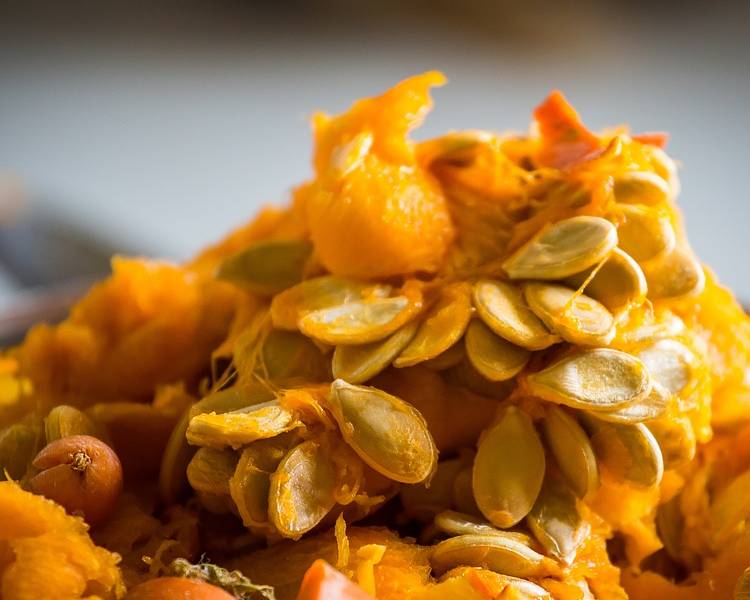

Pumpkin seeds are an excellent remedy for removing intestinal parasites from the body, as well as treating intestinal disorders. With the help of seeds, it is possible to reduce the manifestations of such diseases as: prostatitis, tuberculosis, liver and kidney pathologies.
For a strong half of humanity, seeds are a source of zinc, which is important for the production of the male hormone testosterone. 10 seeds a day will protect a man from diseases of the reproductive system.
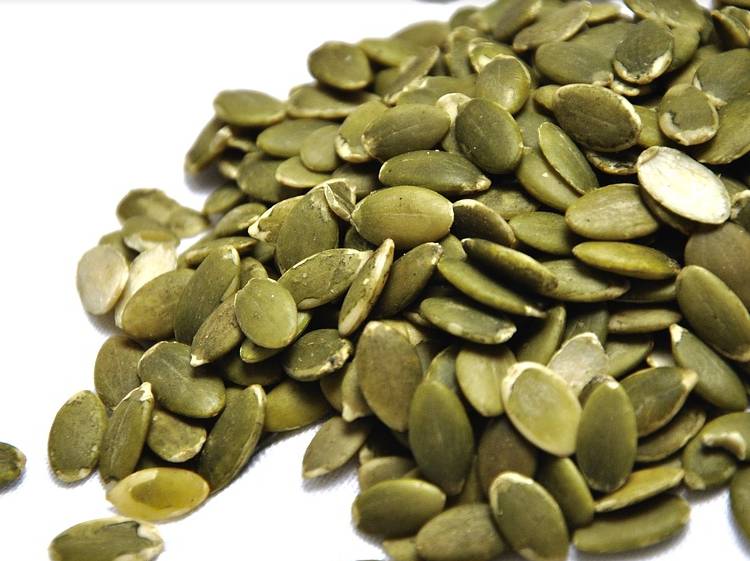

The seeds are shown to everyone: children, adults, the elderly, pregnant and lactating mothers.
The benefits of pumpkin for gastritis
The vegetable is saturated with macro and microelements, which is good in the treatment of many ailments, including gastritis and other pathologies of the stomach.Pumpkin is a diabetic product, therefore it is allowed for gastrointestinal pathologies.
Freshly boiled pumpkin porridge can be considered a light dietary meal that has a good effect on overall well-being, and will also diversify the daily menu.
To prepare a dish, you must take:
- peeled pumpkin pulp - in the amount of 500 g;
- milk - one and a half glasses;
- water - 200 ml.
Chop the peeled pulp, put in a saucepan with water. Boil the pumpkin until soft, then beat with a blender. Pour in milk and boil for another 10 minutes.
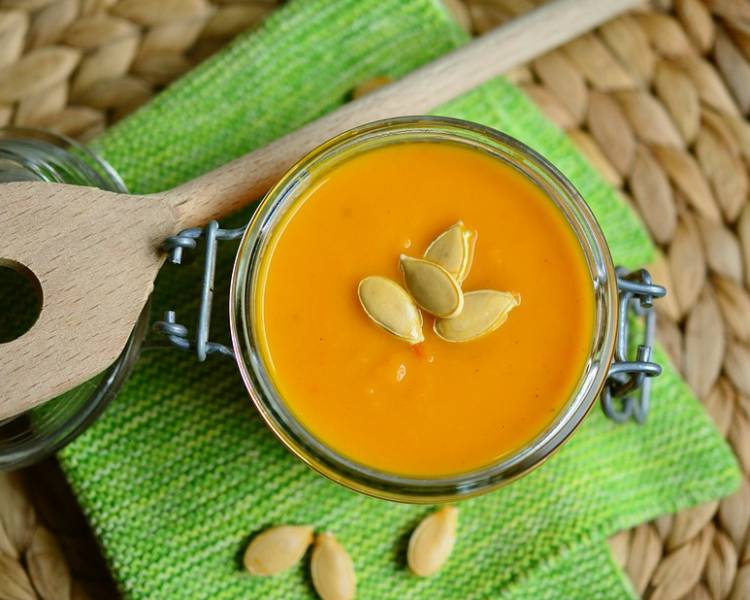

Optionally add olive or butter to the finished dish, a little natural honey for sweetness.
Freshly cooked porridge envelops the walls of the stomach, relieves inflammation and burning sensation, perfectly saturates.

